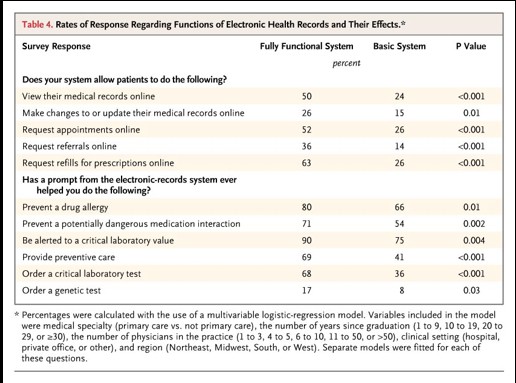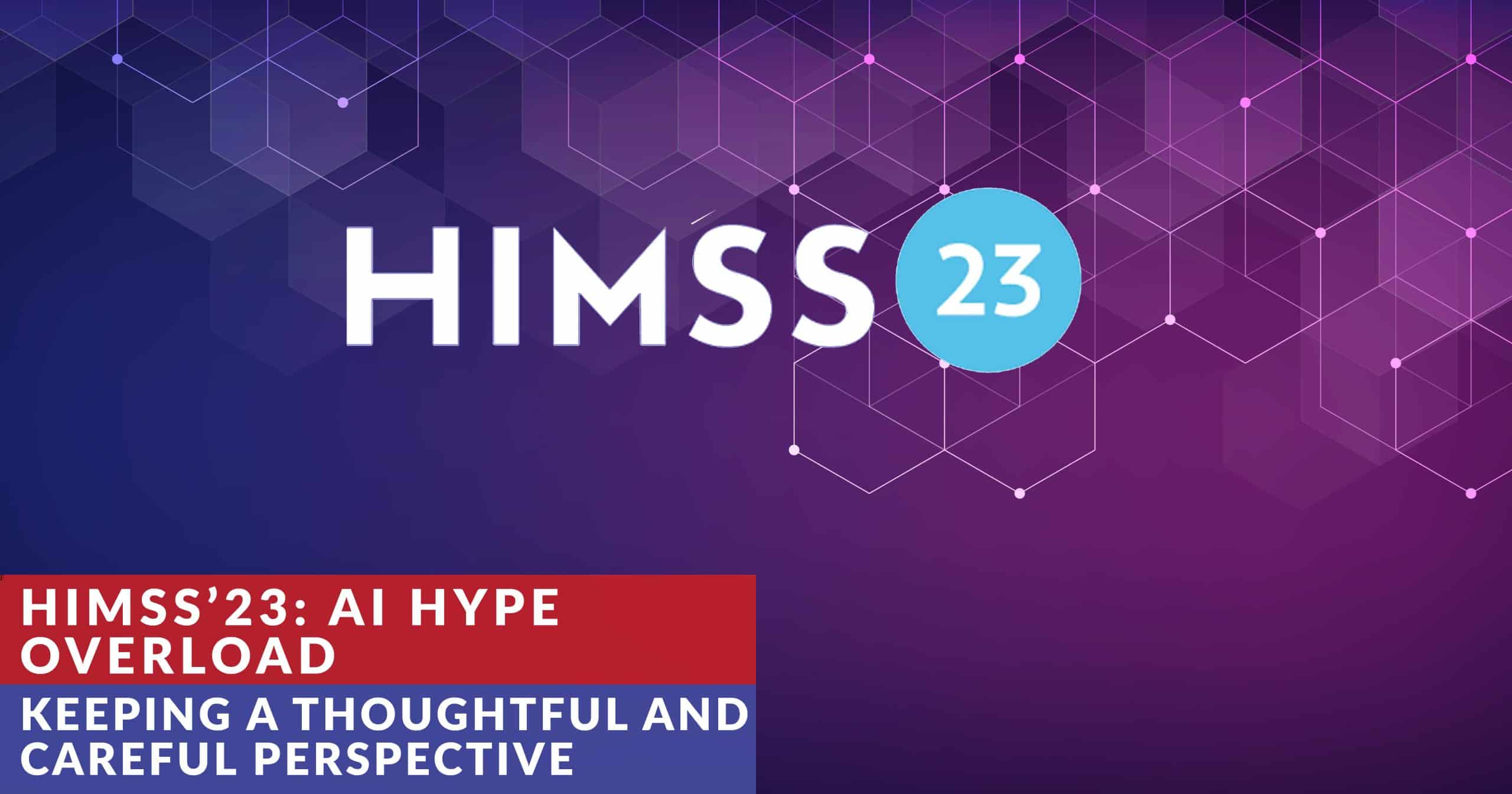without automated data entry. Simply as that.
An exceedingly small percentage of consumers, probably 1% at most, will bother to do the self-entry of all the information necessary to make a truly viable and useful PHR (e.g., medications, lab results, images, clinical notes, etc.). Ideally, much of this data would be drawn automatically from a physician’s EMR to populate a PHR. This is exactly what Google Health is trying to accomplish with its linkages to Cleveland Clinic and Beth Israel as well as HealthVault’s own efforts with Kaiser and several other hospital networks to come e.g., Beth Israel, MedStar, New York Presbyterian.
But Houston, we have a problem.
Very few physicians actually use an EMR. This week, the New England Journal of Medicine (NEJM) released an excellent paper on the adoption of ambulatory EMR solutions. The base of the report is a survey of over 2700 physicians at the end of 2007 and into early 2008. The NEJM found adoption for a fully functional EMR at an abysmal 4% of respondents and a measly 13% adoption for a basic EMR solution, giving us a total of less than 1 in 5 physicians using an EMR.
Number one hurdle to adoption – Cost. I’d argue it has nothing to do with cost and everything to do wih value. Simply put, EMR solutions have typically not provided sufficient value to justify the investment.
But we are headed in the right direction.
Some 16% of survey respondents stated that they have purchased an EMR solution but have not deployed it and another 26% stated that they intend to adopt an EMR solution within the next two years. Thus, if these physicians follow-thru with their plans we will see EMR adoption exceed 50% by 2010.
What does that mean to the PHR market? Continued slow, direct consumer adoption of PHRs and for that matter maybe even Personal Health Systems, without some serious incentives. Businesses (employers, payers and providers) will be providing those incentives for the foreseeable future.
The most astonishing data that the survey flushed out is the level to which patient portals are facilitating care (see figure/table below). Some pretty impressive numbers on the ability to deliver better, preventative care and minimize adverse medication reactions through the use of such systems.
New York Times did a nice article on the NEJM paper that’s worth reading for another perspective.





0 Comments
Trackbacks/Pingbacks